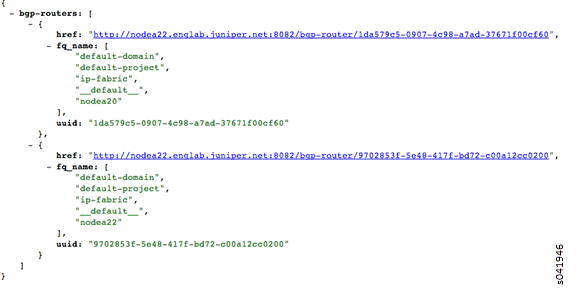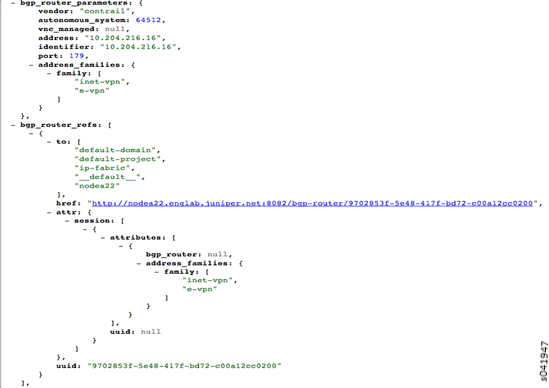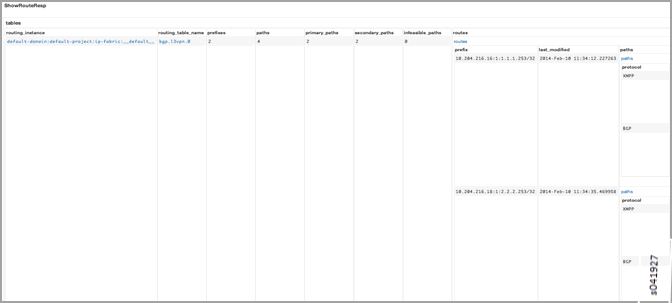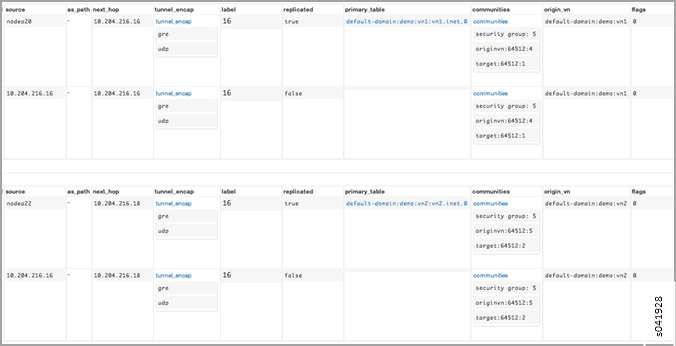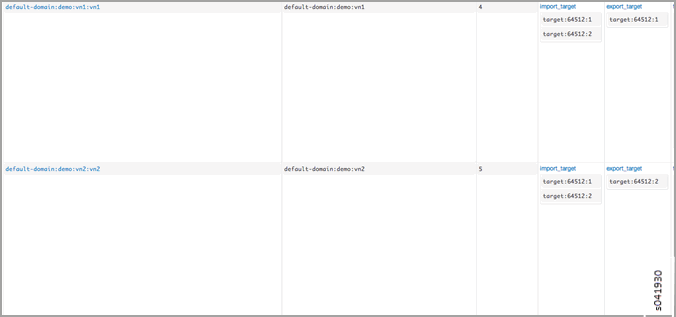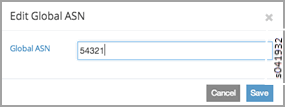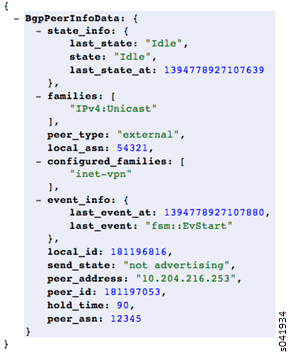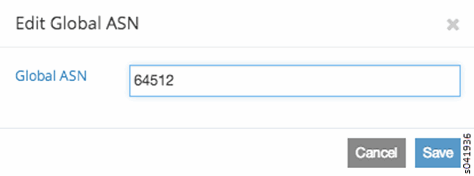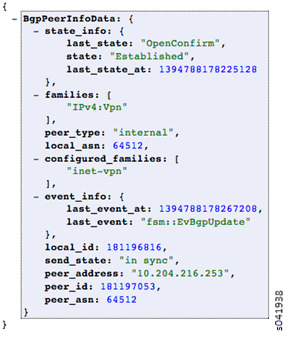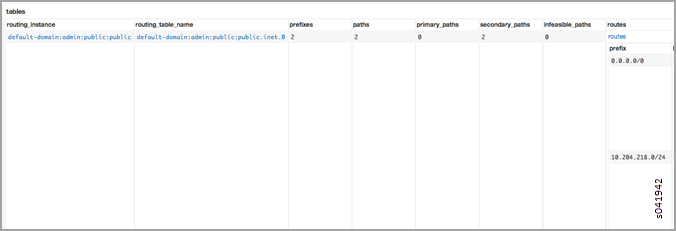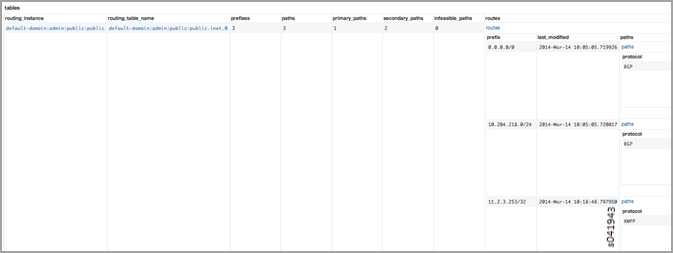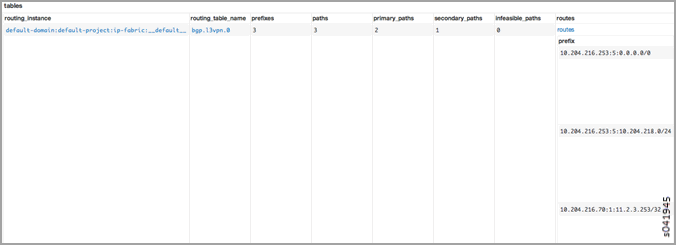- play_arrow Overview
- play_arrow Understanding Contrail Controller
-
- play_arrow Installing and Upgrading Contrail
- play_arrow Supported Platforms and Server Requirements
- play_arrow Installing Contrail and Provisioning Roles
- Introduction to Containerized Contrail Modules
- Introduction to Contrail Microservices Architecture
- Downloading Installation Software
- Overview of contrail-ansible-deployer used in Contrail Command for Installing Contrail with Microservices Architecture
- Installing Contrail with OpenStack and Kolla Ansible
- Configuring the Control Node with BGP
- Contrail Global Controller
- Role and Resource-Based Access Control
- play_arrow Installation and Configuration Scenarios
- Setting Up and Using a Simple Virtual Gateway with Contrail 4.0
- Configuring MD5 Authentication for BGP Sessions
- Configuring the Data Plane Development Kit (DPDK) Integrated with Contrail vRouter
- Configuring Contrail DPDK vRouter to Run in a Docker Container
- Configuring Single Root I/O Virtualization (SR-IOV)
- Configuring Virtual Networks for Hub-and-Spoke Topology
- Configuring Transport Layer Security-Based XMPP in Contrail
- Configuring Graceful Restart and Long-lived Graceful Restart
- Remote Compute
- Dynamic Kernel Module Support (DKMS) for vRouter
- play_arrow Upgrading Contrail Software
- play_arrow Backup and Restore Contrail Software
- play_arrow Multicloud Contrail
- play_arrow Using Contrail with Kubernetes
- Contrail Integration with Kubernetes
- Installing and Managing Contrail 5.0 Microservices Architecture Using Helm Charts
- Provisioning of Kubernetes Clusters
- Using Helm Charts to Provision Multinode Contrail OpenStack Ocata with High Availability
- Using Helm Charts to Provision All-in-One Contrail with OpenStack Ocata
- Accessing a Contrail OpenStack Helm Cluster
- Frequently Asked Questions About Contrail and Helm Charts
- Contrail Deployment with Helm
- Verifying Configuration for CNI for Kubernetes
- Kubernetes Updates to IP Fabric
- Implementation of Kubernetes Network Policy with Contrail Firewall Policy
- play_arrow Using VMware vCenter with Containerized Contrail
- vCenter Integration for Contrail Release 5.0
- vCenter Integration for Contrail Release 5.0.1
- vCenter Integration for Contrail Release 5.0.2
- Underlay Network Configuration for ContrailVM
- Using the Contrail and VMware vCenter User Interfaces to Manage the Network For Contrail Releases 5.0 and 5.0.1
- Using the Contrail and VMware vCenter User Interfaces to Manage the Network For Contrail Release 5.0.2
- Integrating Contrail Release 5.0.X with VMware vRealize Orchestrator
- Installing and Provisioning Contrail VMware vRealize Orchestrator Plugin
- play_arrow Using Contrail with Red Hat
- play_arrow Contrail and AppFormix Kolla/Ocata OpenStack Deployment
- Contrail and AppFormix Deployment Requirements
- Preparing for the Installation
- Run the Playbooks
- Accessing Contrail in AppFormix Management Infrastructure in UI
- Notes and Caveats
- Example Instances.yml for Contrail and AppFormix OpenStack Deployment
- Installing AppFormix for OpenStack
- Installing AppFormix for OpenStack in HA
- play_arrow Using Contrail with Juju Charms
- play_arrow Contrail Command
- play_arrow Extending Contrail to Physical Routers, Bare Metal Servers, Switches, and Interfaces
- Understanding Bare Metal Server Management
- Configuring High Availability for the Contrail OVSDB ToR Agent
- Using Device Manager to Manage Physical Routers
- SR-IOV VF as the Physical Interface of vRouter
- Using Gateway Mode to Support Remote Instances
- REST APIs for Extending the Contrail Cluster to Physical Routers, and Physical and Logical Interfaces
- play_arrow Contrail for Data Center Automation and Fabric Management
-
- play_arrow Configuring Contrail
- play_arrow Configuring Virtual Networks
- Creating Projects in OpenStack for Configuring Tenants in Contrail
- Creating a Virtual Network with Juniper Networks Contrail
- Creating a Virtual Network with OpenStack Contrail
- Creating an Image for a Project in OpenStack Contrail
- Creating a Floating IP Address Pool
- Using Security Groups with Virtual Machines (Instances)
- Support for IPv6 Networks in Contrail
- Configuring EVPN and VXLAN
- Support for EVPN Route Type 5
- play_arrow Example of Deploying a Multi-Tier Web Application Using Contrail
- play_arrow Configuring Services
- play_arrow Configuring Service Chaining
- play_arrow Examples: Configuring Service Chaining
- play_arrow Adding Physical Network Functions in Service Chains
- play_arrow QoS Support in Contrail
- play_arrow BGP as a Service
- play_arrow Load Balancers
- play_arrow Optimizing Contrail
-
- play_arrow Contrail Security
- play_arrow Contrail Security
-
- play_arrow Contrail Commands and APIs
- play_arrow Contrail Commands
- play_arrow Contrail Application Programming Interfaces (APIs)
-
ON THIS PAGE
Debugging BGP Peering and Route Exchange in Contrail
Use the troubleshooting steps and guidelines in this topic when you have errors with Contrail BGP peering and route exchange.
Example Cluster
Examples in this document refer to a virtual cluster that is set up as follows:
Config Nodes : [‘nodea22’, ‘nodea20’] Control Nodes : [‘nodea22’, ‘nodea20’] Compute Nodes : [‘nodea22’, ‘nodea20’] Collector : [‘nodea22’] WebU : nodea22 Openstack : nodea22
Verifying the BGP Routers
Use this procedure to launch various introspects to verify the setup of the BGP routers in your system.
Use this procedure to launch various introspects to verify the setup of the BGP routers in your system.
Verifying the Route Exchange
The following two virtual networks are used in the sample debugging session for route exchange.
vn1 -> 1.1.1.0/24
vn2 -> 2.2.2.0/24Example Procedure for Verifying Route Exchange
Debugging Route Exchange with Policies
This section uses the sample output and the sample vn1 and vn2 to demonstrate methods of debugging route exchange with policies.
Debugging Peering with an MX Series Router
This section sets up an example BGP MX Series peer and provides some troubleshooting scenarios.
Debugging a BGP Peer Down Error with Incorrect Family
Use this procedure to identify and resolve errors that arise from families mismatched configurations.
This example uses locations at http: //<host
ip address>:. Be sure to replace <host
ip address> with the correct address for your environment.
Checking the Route in the MX Series Router
Use Junos CLI show commands from the router to check the route.
run show route table public.inet.0
public.inet.0: 5 destinations, 6 routes (5 active, 0 holddown, 0 hidden)
+ = Active Route, - = Last Active, * = Both
0.0.0.0/0 *[Static/5] 15w6d 08:50:34
> to <ip address> via ge-1/0/1.0
<ip address> *[Direct/0] 15w6d 08:50:35
> via ge-1/0/1.0
<ip address> *[Local/0] 15w6d 08:50:51
Local via ge-1/0/1.0
<ip address> *[BGP/170] 01:13:34, localpref 100, from <ip address>
AS path: ?, validation-state: unverified
> via gr-1/0/0.32771, Push 16
[BGP/170] 01:13:34, localpref 100, from <ip address>
AS path: ?, validation-state: unverified
> via gr-1/0/0.32771, Push 16
<ip address> *[BGP/170] 00:03:20, localpref 100, from <ip address>
AS path: ?, validation-state: unverified
> via gr-1/0/0.32769, Push 16
run show route table bgp.l3vpn.0 receive-protocol bgp <ip address> detail
bgp.l3vpn.0: 92 destinations, 130 routes (92 active, 0 holddown, 0 hidden)
* <ip address> (1 entry, 0 announced)
Import Accepted
Route Distinguisher: <ip address>
VPN Label: 16
Nexthop: <ip address>
Localpref: 100
AS path: ?
Communities: target:64512:1 target:64512:10003 unknown iana 30c unknown iana 30c unknown type 8004 value fc00:1 unknown type 8071 value fc00:4






















